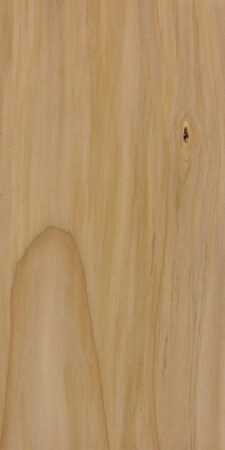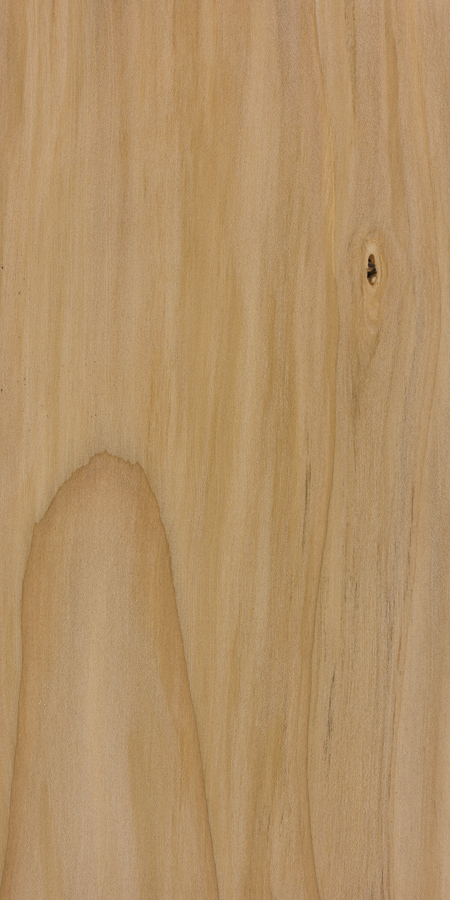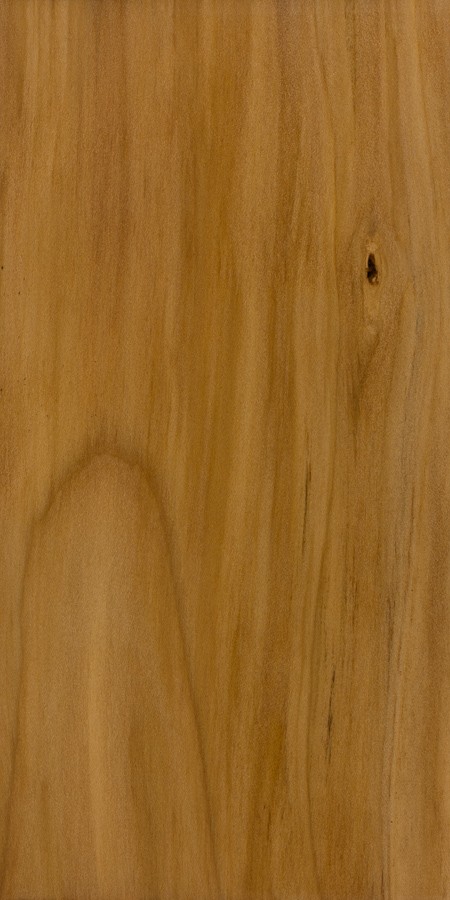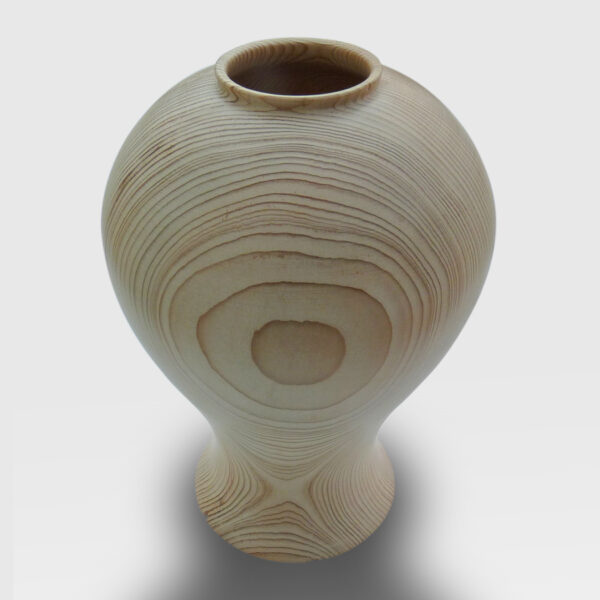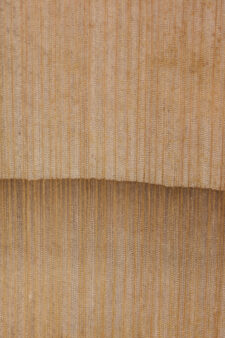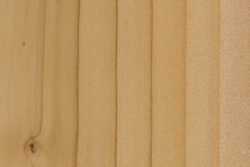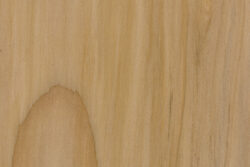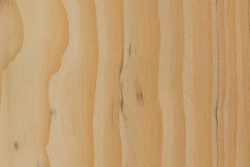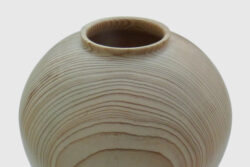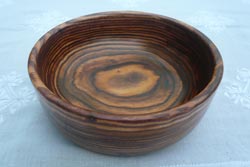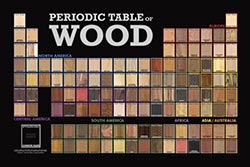Common Name(s): Cyprus cedar
Scientific Name: Cedrus brevifolia, some authors treat this species as a variety or subspecies of C. libani
Distribution: Endemic to Cyprus
Tree Size: 50-65 ft (15-20 m) tall,
3-4 ft (1-1.2 m) trunk diameter
Average Dried Weight: 32.4 lbs/ft3 (520 kg/m3)*
Specific Gravity (Basic, 12% MC): .41, .52*
Janka Hardness: 820 lbf (3,670 N)*
Modulus of Rupture: 11,890 lbf/in2 (82.0 MPa)*
Elastic Modulus: 1,465,000 lbf/in2 (10.10 GPa)*
Crushing Strength: 6,090 lbf/in2 (42.0 MPa)*
Shrinkage: Radial: 4.1%, Tangential: 6.0%,
Volumetric: 10.4%, T/R Ratio: 1.5*
*The data above is for Cedrus libani. The wood of the two species are anatomically indistinguishable, and some authors treat C. brevifolia as a subspecies or variety of C. libani.
Color/Appearance: Heartwood is a straw color to light reddish brown. Narrow sapwood is pale yellowish white. Depending on where and how the source tree grew, wood may have large knots.
Grain/Texture: Grain is generally straight, though knots or bark inclusions may cause grain irregularities. Medium to coarse texture with moderate to low natural luster.
Rot Resistance: Rated as very durable, with good overall insect/borer resistance.
Workability: Easy to work with hand and machine tools, though knots and areas with irregular grain can cause difficulties in machining. Turns, glues, and finishes well.
Odor: Has a lingering, sweet scent.
Allergies/Toxicity: If Cedrus brevifolia is treated as a distinct species, there’s technically no data on potential reactions with the wood. However, since it is so closely related to C. libani, it is fair to assumed that similar reactions would be produced in both woods. Although severe reactions are quite uncommon, cedar of Lebanon has been reported to cause skin and respiratory irritation, as well as runny nose and asthma-like symptoms. See the articles Wood Allergies and Toxicity and Wood Dust Safety for more information.
Pricing/Availability: Not harvested on a commercial scale, storm damaged or ornamental trees are sometimes harvested and sold as smaller craft and turning blanks.
Sustainability: This wood species is not listed in the CITES Appendices, but is on the IUCN Red List. Technically, it is included as a subpopulation of C. libani in Cyprus, being listed as vulnerable primarily due to a total area of occupancy of less than 770 square miles (2,000 square kilometers), and a severely fragmented population. (The area of occupancy would be even less if the IUCN evaluated Cedrus brevifolia as a separate species rather than a subspecies.)
Common Uses: Veneer, cabinetry, building construction, boxes/chests (interior lining), and turned objects.
Comments: In a botanical sense, Cedrus brevifolia could be considered a true cedar in even the strictest sense of the word. The most conservative definition of ‘cedar’ is limited only to trees of the Cedrus genus.
Cyprus cedar is very closely related to Cedar of Lebanon. But as the species name brevifolia implies, the needles of Cyprus cedar are shorter than the other Cedrus species. Additionally, Cyprus cedar is characterized by slower growth than most other cedars. (However, ornamental trees planted in non-native locations can have faster growth rates and wider growth rings, as seen in the endgrain sample below.)
Images: Drag the slider up/down to toggle between raw and finished wood.
Identification: See the article on Softwood Anatomy for definitions of endgrain features.
Resin canals : absent (though sometimes present due to injury)
Tracheid diameter : small
Earlywood to latewood transition : gradual (slower grown wood may have a more abrupt transition)
Grain contrast : high
Parenchyma : none
Lookalikes/Substitutes: Cyprus cedar can sometimes be confused with other softwoods, particularly those that have aromatic wood. Mediterranean cypress (Cupressus sempervirens) is a species with similar geographic distribution and aromatic wood. While many Cupressus species can have diffuse parenchyma (which Cedrus lacks), the easiest and most practical way to seperate the two is through scent. Initial reference material may be needed, but the scents of the two genera are generally divergent enough to be readily distinguished.
Notes: Different cedar species within the Cedrus genus can’t be reliably separated on the basis of wood anatomy.
Related Content:

